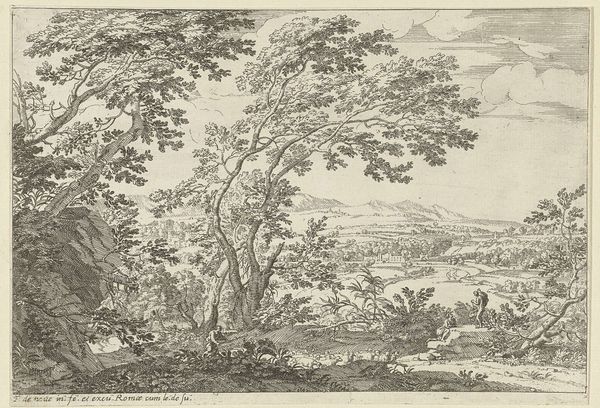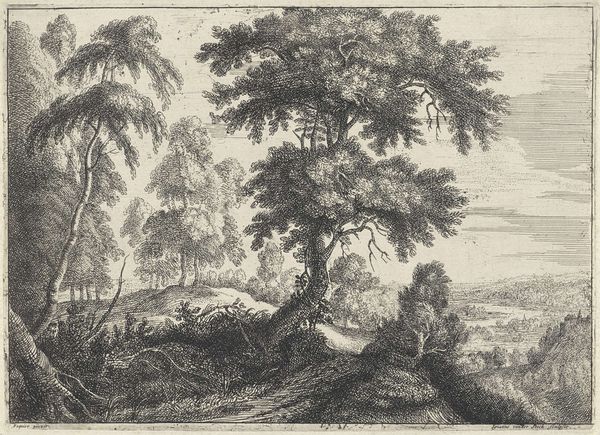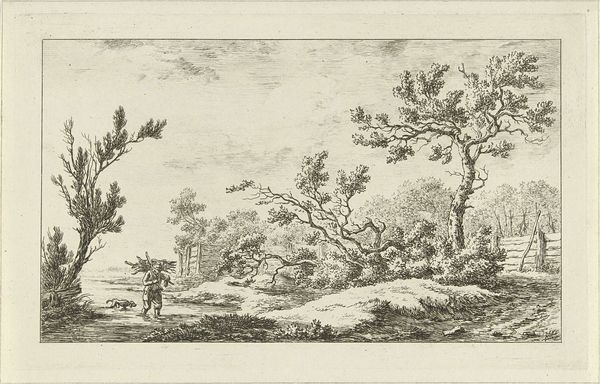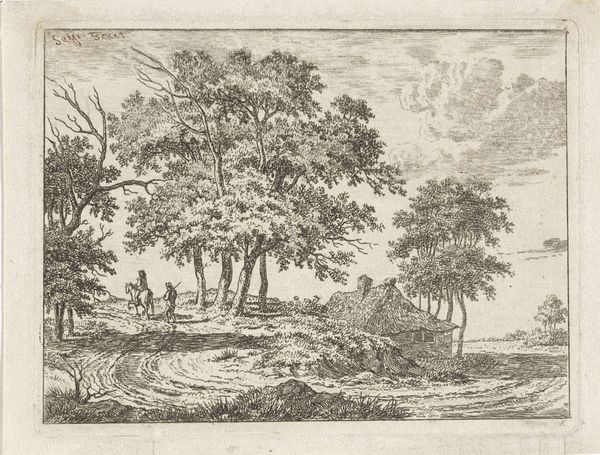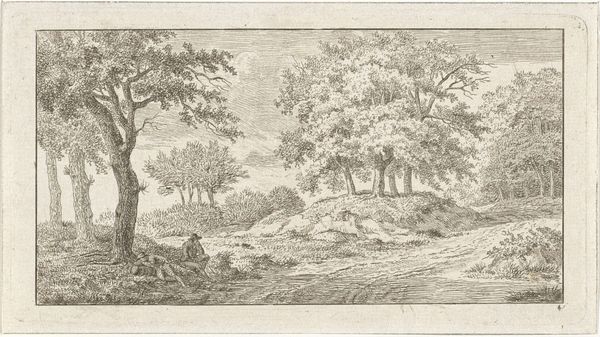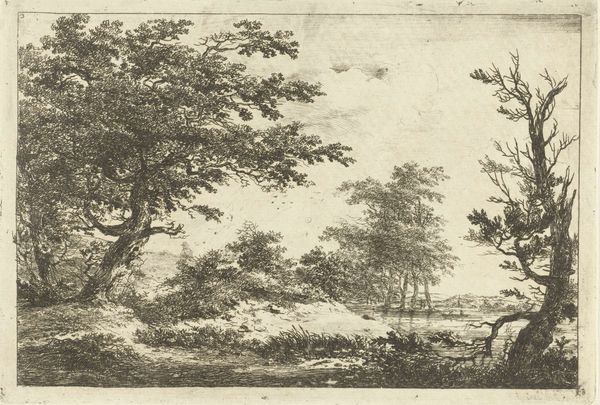
print, etching, intaglio
# print
#
etching
#
intaglio
#
landscape
#
romanticism
Dimensions: height 127 mm, width 190 mm
Copyright: Rijks Museum: Open Domain
Curator: This intaglio print, "Rustende man in bos," or "Resting Man in the Woods," is the work of Hermanus Fock, created sometime between 1781 and 1822. Currently, it resides in the Rijksmuseum collection. Editor: My immediate impression is one of quiet contemplation, a visual manifestation of Romantic ideals, conveyed via incredibly precise line work. The figure almost melts back into the thick of the woods around him. Curator: Precisely. Fock’s mastery lies in his layering of etched lines, a textural strategy that builds depth while complicating our reading of depth. The figure serves, then, as both a focal point, drawing the viewer's eye, but also serves as a kind of measure, highlighting the scale and implied depth of the forest scene itself. Editor: I’m interested in the production. Look closely and one can appreciate the labor invested. Each tiny stroke involved in the process of etching and how these accumulate into this delicate interplay between dark and light. Curator: The use of etching lends itself beautifully to the landscape genre, mimicking the delicate details found in nature – the individual blades of grass, the texture of the tree bark. Consider also the use of chiaroscuro here. Light emanates not from a single, obvious source, but feels almost atmospheric. Editor: Absolutely, the artist shows an exquisite rendering, and for me, an environmental concern emerges too: an aesthetic appreciation is created here to increase concern toward nature as it provides the worker a safe and quiet harbor of respite. Curator: The figure itself, though small, suggests the prevailing Romantic ideal—Man at one with Nature, finding solace and contemplation in its embrace, a clear aesthetic ideal of Romanticism at work. Editor: Looking at this through the lens of material culture provides great perspective. The etching technique seems to encourage an appreciation for not just artistic expression, but the labor involved in producing each print as well. Curator: Indeed, examining Fock's technique enhances our understanding. His strategic use of line and light constructs not only a beautiful landscape, but also an intellectual invitation, beckoning us toward reflective contemplation. Editor: So well stated, for in tracing how each etched line transforms materials into meaning, we’ve uncovered something important about the artist and our own perception of art making.
Comments
No comments
Be the first to comment and join the conversation on the ultimate creative platform.

